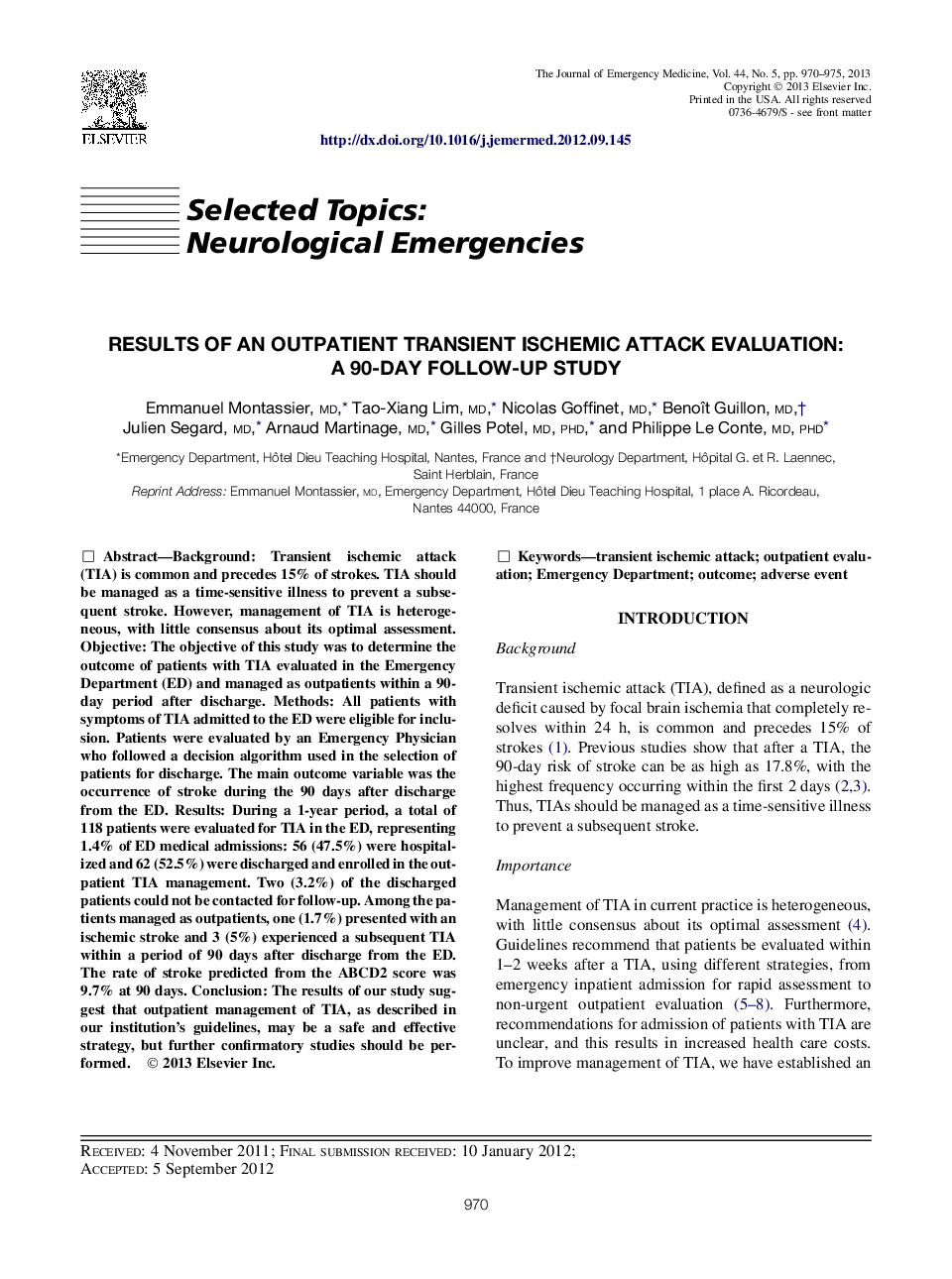| Article ID | Journal | Published Year | Pages | File Type |
|---|---|---|---|---|
| 6085628 | The Journal of Emergency Medicine | 2013 | 6 Pages |
BackgroundTransient ischemic attack (TIA) is common and precedes 15% of strokes. TIA should be managed as a time-sensitive illness to prevent a subsequent stroke. However, management of TIA is heterogeneous, with little consensus about its optimal assessment.ObjectiveThe objective of this study was to determine the outcome of patients with TIA evaluated in the Emergency Department (ED) and managed as outpatients within a 90-day period after discharge.MethodsAll patients with symptoms of TIA admitted to the ED were eligible for inclusion. Patients were evaluated by an Emergency Physician who followed a decision algorithm used in the selection of patients for discharge. The main outcome variable was the occurrence of stroke during the 90 days after discharge from the ED.ResultsDuring a 1-year period, a total of 118 patients were evaluated for TIA in the ED, representing 1.4% of ED medical admissions: 56 (47.5%) were hospitalized and 62 (52.5%) were discharged and enrolled in the outpatient TIA management. Two (3.2%) of the discharged patients could not be contacted for follow-up. Among the patients managed as outpatients, one (1.7%) presented with an ischemic stroke and 3 (5%) experienced a subsequent TIA within a period of 90 days after discharge from the ED. The rate of stroke predicted from the ABCD2 score was 9.7% at 90 days.ConclusionThe results of our study suggest that outpatient management of TIA, as described in our institution's guidelines, may be a safe and effective strategy, but further confirmatory studies should be performed.
